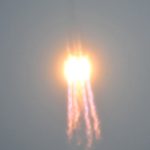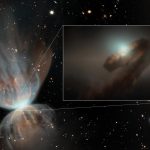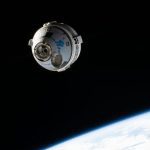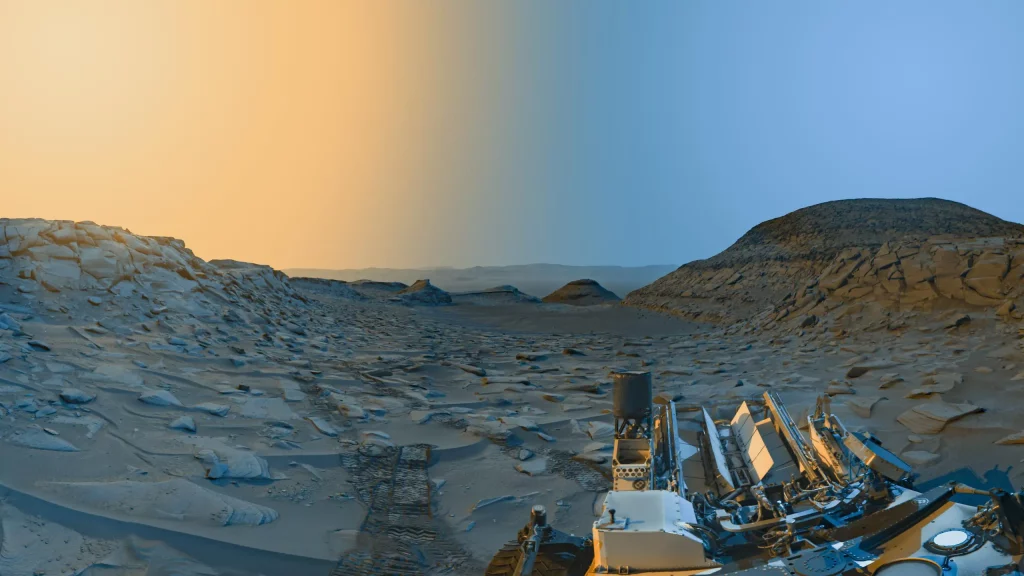Penjelajah Curiosity Mars NASA menggunakan kamera navigasi hitam putih untuk menangkap gambar panorama dua kali sehari pada 8 April 2023. Kredit: NASA/JPL-Caltech
Pencahayaan digabungkan dua kali sehari untuk pemandangan yang menakjubkan dari medan yang ditinggalkan rover.
Setelah menyelesaikan pembaruan perangkat lunak utama pada bulan April,[{” attribute=””>NASA’s Curiosity Mars rover took a last look at “Marker Band Valley” before leaving it behind, capturing a “postcard” of the scene.
The postcard is an artistic interpretation of the landscape, with color added over two black-and-white panoramas captured by Curiosity’s navigation cameras. The views were taken on April 8 at 9:20 a.m. and 3:40 p.m. local Mars time, providing dramatically different lighting that, when combined, makes details in the scene stand out. Blue was added to parts of the postcard captured in the morning and yellow to parts taken in the afternoon, just as with a similar postcard taken by Curiosity in November 2021.

NASA’s Curiosity Mars rover used its black-and-white navigation cameras to capture panoramas at two times of day on April 8, 2023. Figure A is an annotated version of the postcard noting geographic features and elements of the rover. Credit: NASA/JPL-Caltech
The resulting image is striking. Curiosity is in the foothills of Mount Sharp, which stands 3 miles (5 kilometers) high within Gale Crater, where the rover has been exploring since landing in 2012. In the distance beyond its tracks is Marker Band Valley, a winding area in the “sulfate-bearing region” within which the rover discovered unexpected signs of an ancient lake. Farther below (at center and just to the right) are two hills – “Bolívar” and “Deepdale” – that Curiosity drove between while exploring “Paraitepuy Pass.”

Morning panorama without ad. Credit: NASA/JPL-Caltech
“Anyone who’s been to a national park knows the scene looks different in the morning than it does in the afternoon,” said Curiosity engineer Doug Ellison of NASA’s Jet Propulsion Laboratory in Southern California, who planned and processed the images. “Capturing two times of day provides dark shadows because the lighting is coming in from the left and the right, like you might have on a stage – but instead of stage lights, we’re relying on the Sun.”

Afternoon panorama without added color. Credit: NASA/JPL-Caltech
Adding to the depth of the shadows is the fact that it was winter – a period of lower airborne dust – at Curiosity’s location when the images were taken. “Mars’ shadows get sharper and deeper when there’s low dust and softer when there’s lots of dust,” Ellison added.
The image peers past the rear of the rover, providing a glimpse of its three antennas and nuclear power source. The Radiation Assessment Detector, or RAD, instrument, which appears as a white circle in the lower right of the image, has been helping scientists learn how to protect the first astronauts sent to Mars from radiation on the planet’s surface.
More About the Mission
Curiosity was built by NASA’s Jet Propulsion Laboratory (JPL), which is managed by the California Institute of Technology (Caltech) in Pasadena, California. JPL leads the mission on behalf of NASA’s Science Mission Directorate in Washington.

“Kutu buku musik lepas. Pecandu internet bersertifikat. Pencinta perjalanan. Penyelenggara hardcore. “









More Stories
Video: Peluncuran pesawat ruang angkasa Chang'e-6 Tiongkok di sisi jauh bulan
Para astronom memecahkan misteri ledakan dramatis FU Orionis pada tahun 1936
Perbandingan Kru Komersial NASA Boeing Starliner dan SpaceX Dragon